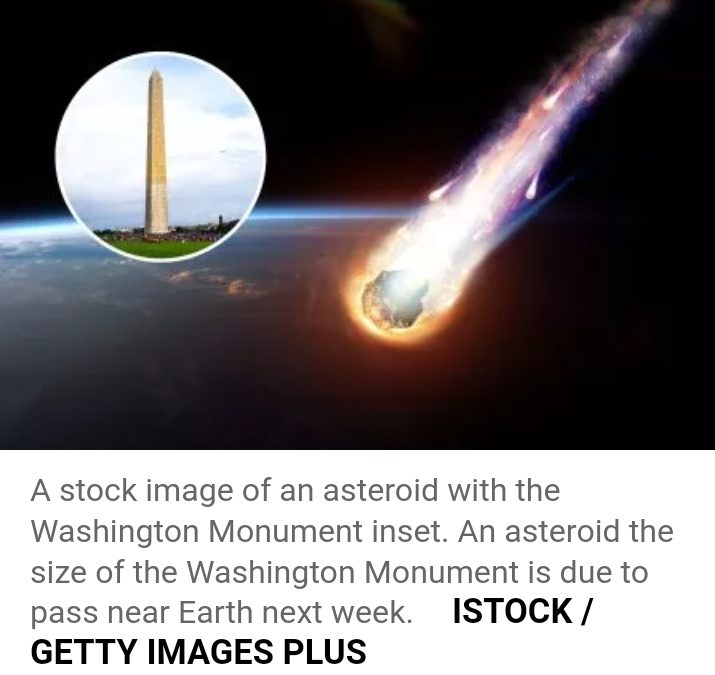An asteroid as large as the Washington Monument is due to pass Earth next week, approaching closer than the orbit of our moon.
The asteroid, named 2024 MK, is estimated to be between 394 to 885 feet in diameter—for comparison, the Washington Monument is 555 feet tall, and the Eiffel Tower is 1,083 feet tall.
On June 29, 2024 MK is set to whiz past our planet at a distance of about 181,300 miles, meaning it may pass us about 20 percent closer than the 238,900-mile orbit of the moon, according to United States National Aeronautics and Space Administration, NASA’s Center for Near Earth Object Studies.
The asteroid is expected to be traveling at a speed of 9.37 km/s, or about 20,960 mph. For comparison, the speed of sound on Earth is 767 mph.
Asteroids are the leftover building blocks from the early solar system that never developed into planets. They primarily originate from the asteroid belt between Mars and Jupiter, and they sometimes veer close to Earth after being nudged from their orbit by Jupiter’s gravity.
Asteroids become near-Earth objects, or NEOs, if they come within 1.3 astronomical units of the Sun, with one AU being the distance from Earth to the Sun—about 93 million miles. There are about 31,000 of these NEO asteroids in our solar system that we know of so far.
Some NEOs are also classified as potentially hazardous asteroids or potentially hazardous objects, which are defined as coming within 4.6 million miles of Earth and having a diameter of at least 460 feet.
“If a cosmic body of this size crashed into Earth, it could destroy an entire city and cause extreme regional devastation; larger objects [over 0.62 miles across] could have global effects and even cause mass extinction,” Svetla Ben-Itzhak, an assistant professor of space and international relations at Johns Hopkins University, told Newsweek.
Because of its size and proximity to Earth, 2024 MK is considered both a near-Earth object and a potentially hazardous asteroid.
“An asteroid 100-200 m [330-650 feet] in diameter would cause a regional disaster, taking out a small country, but with the resulting global consequences in terms of the global economy and ‘globalization,'” Jay Tate, the director of the Spaceguard Centre, an observatory in the U.K., previously told Newsweek.
It is incredibly unlikely that 2024 MK will hit Earth. According to NASA’s Center for Near Earth Object Studies, this asteroid has a 0.00000095 chance of hitting Earth in the year 2116.
Related posts
Categories
- Advertisements (1)
- Agriculture (44)
- Breaking News (25)
- Business (583)
- Crime (951)
- Education (304)
- Entertainment (124)
- Features (13)
- For The Records (41)
- Foreign News (1,145)
- Health (210)
- Home News (332)
- Interview (9)
- Judiciary (335)
- Lifestyle (138)
- Local News (111)
- National News (1,411)
- Opinion (26)
- Politics (938)
- Religion (146)
- Science and Technology (120)
- Security (634)
- Sports (833)
- States' News (755)
- Transportation (309)
- Uncategorized (9)

